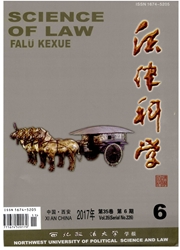

 中文摘要:
中文摘要:
醉驾型危险驾驶罪类似国外违警罪的特性,决定了该罪出罪通道不应通过《刑法》第13条中但书现象建立。结合该罪实体要件取决于程序鉴定结果之特性,应跳出刑事实体法之外,结合刑事程序法对刑事证据证明标准有关理论,围绕如何判断醉驾案证据证明力问题并建立相应的证据规则,以严把入罪关。根据醉驾案证据证明力高低不同,可建立如下证据规则:单独呼气酒精测试结果只能作为醉驾案立案侦查依据而非定案证据使用;单独血液酒精含量测试结果可以作为定罪证据使用,且并不违反刑事诉讼法中孤证不立原则,但其客观性与合法性必须经过排除合理怀疑;既无呼气酒精测试也无血液酒精含量测试结果时,仅凭旁证不能认定醉驾犯罪成立。
 英文摘要:
英文摘要:
Because of the similarity between the drunk driving as a type of dangerous driving crime and the police of- fense abroad, we can not judge the non-criminalization of drunk driving through the saving clause in Article 13 of the Criminal Law. We should use the criminal proof standard theory in criminal procedural law, seek the methods of judging the probative force, and construct the evidence rules to achieve the non - criminalization. Firstly, the sole resuh of breath alco- hol test can only be used as the basis of investigation not conviction. Secondly, the sole result of blood alcohol test can be used as the evidence of conviction, but the objectivity and the legality must beyond the reasonable doubt. Thirdly, we can-not convict one person drunk driving crime only by the circumstantial evidence, when there is neither result of breath alco-hol test nor the result of blood alcohol test. The function of human rights protection in criminal law can be fulfilled through constructing the proof rules in drunk driving case.
 同期刊论文项目
同期刊论文项目
 同项目期刊论文
同项目期刊论文
 期刊信息
期刊信息
